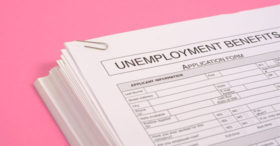With a median loss of $954,000, financial statement fraud is the costliest type of white-collar crime, according to the Association of Certified Fraud Examiners. Fortunately, auditors and forensic accountants may be able to detect inflated income and other financial manipulation by testing journal entries.
Unearthing suspicious entries
Financial statement frauds come in many forms. For example, out-of-period revenue can be recorded to inflate revenue. Repair costs can be improperly capitalized as fixed assets to boost earnings. Accounts payable can be understated by recording post-closing journal entries to income. Or expenses can be reclassified to reserves and intercompany accounts, thereby increasing earnings.
To detect these types of scams, auditors:
- Learn about the company’s financial reporting process and controls over journal entries,
- Identify and select journal entries and other adjustments for testing,
- Determine the timing of the testing, and
- Interview individuals involved in the financial reporting process about inappropriate or unusual activity relating to the processing of journal entries.
Financial statement auditors may call on forensic accounting experts when they notice significant irregularities in a company’s financial records.
Testing journal entries
There generally are several common denominators among fraudulent journal entries. Experts look out for entries that are made:
- To unrelated, unusual or seldom-used accounts,
- By individuals who typically don’t make journal entries,
- At the end of the period or as post-closing entries that have little or no explanation or description,
- Before or during the preparation of the financial statements without account numbers, and
- To accounts that contain transactions that are complex or unusual in nature and that have significant estimates and period-end adjustments.
Other red flags include adjustments for intercompany transfers and entries for amounts made just below the individual’s approval threshold or containing large, round-dollar amounts.
Technology tools are critical. Computerized testing enables auditors to evaluate entire datasets, thus reducing the risk of overlooking critical evidence. Such testing also allows fraud experts to devote more time to other aspects of an investigation, such as gathering information about the business and interviewing employees. Computerized testing can prove particularly helpful in situations where manual testing is largely ineffective — for example, when entries exist only in an electronic format and the desired data must be extracted.
Technology and expertise
Computer-assisted journal entry testing doesn’t replace a skilled auditor or fraud expert. Instead, these tools free up the expert’s time. Contact us about examining your company’s financial statements for signs of fraudulent activity.
© 2020 Covenant CPA









